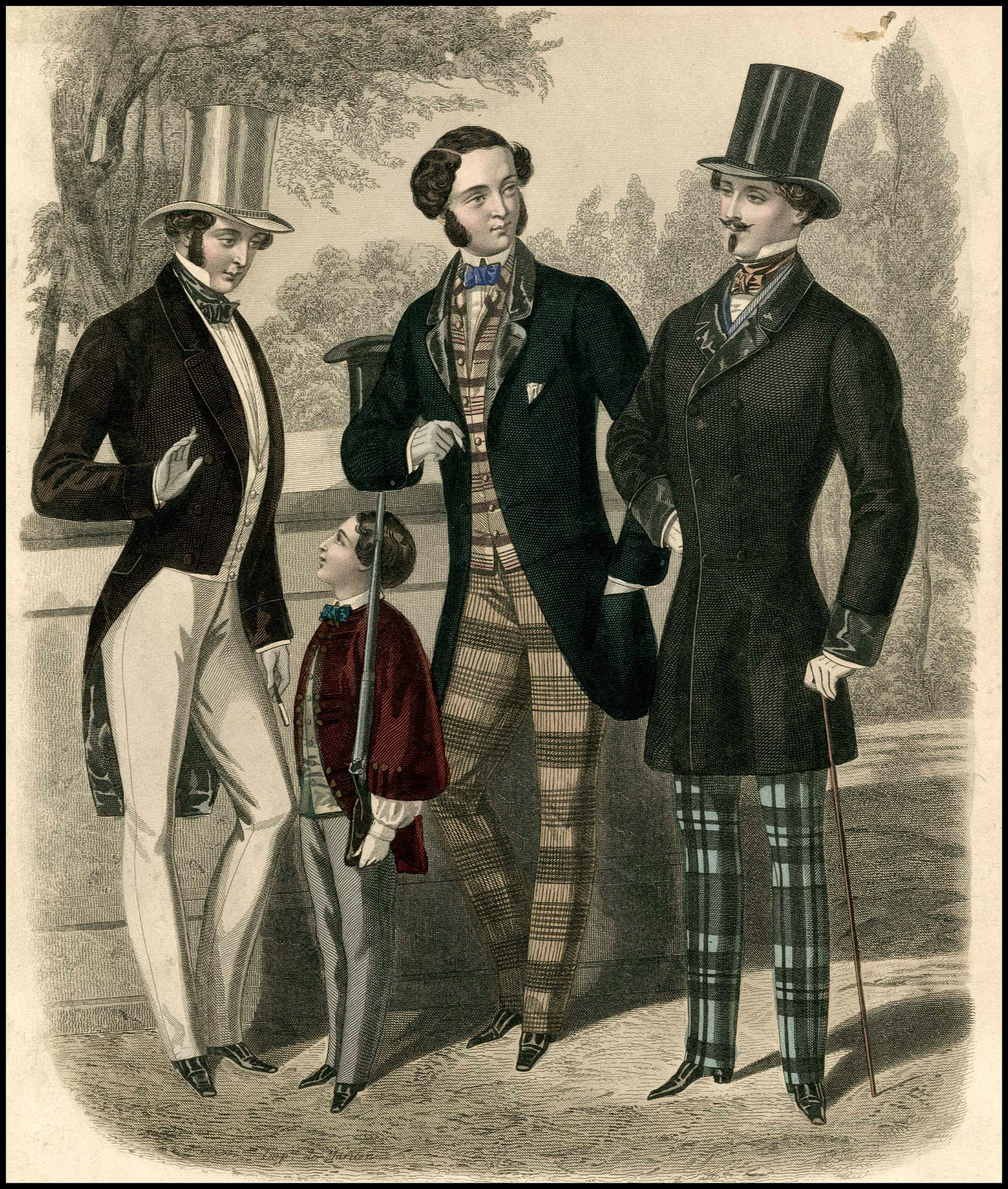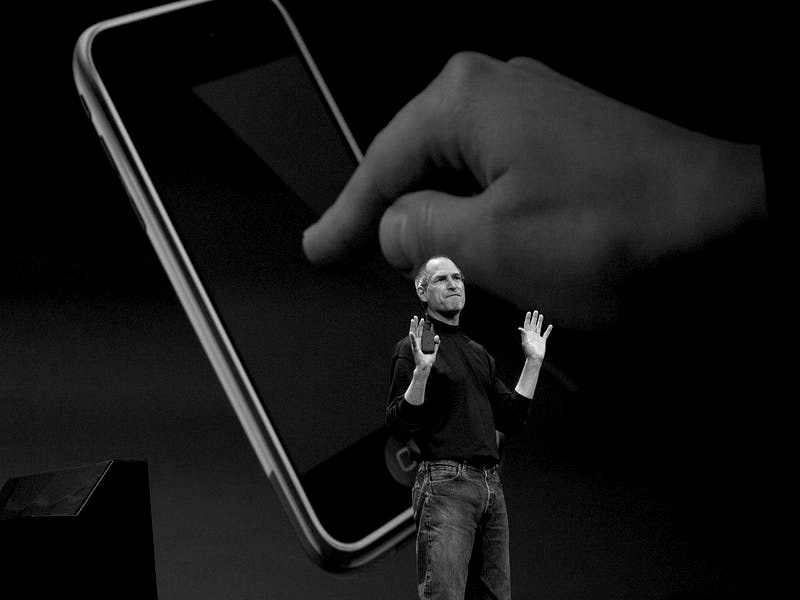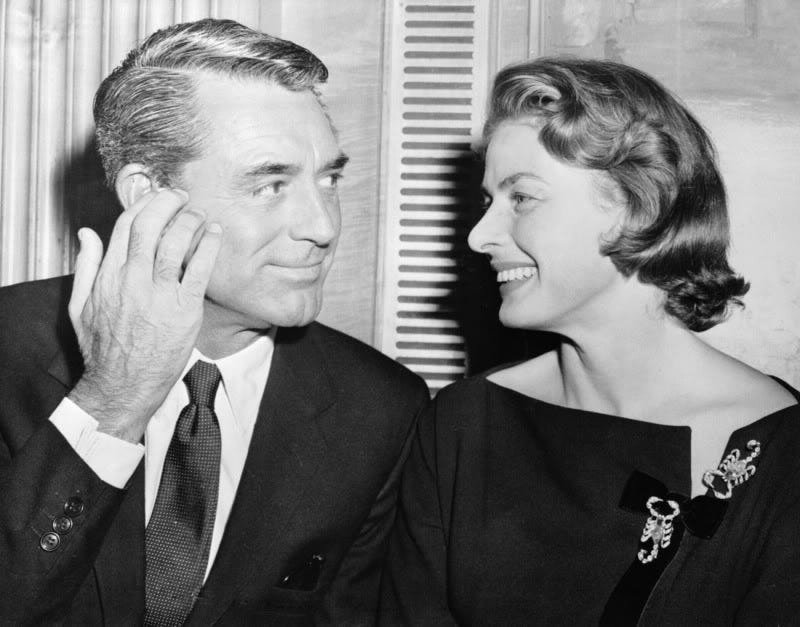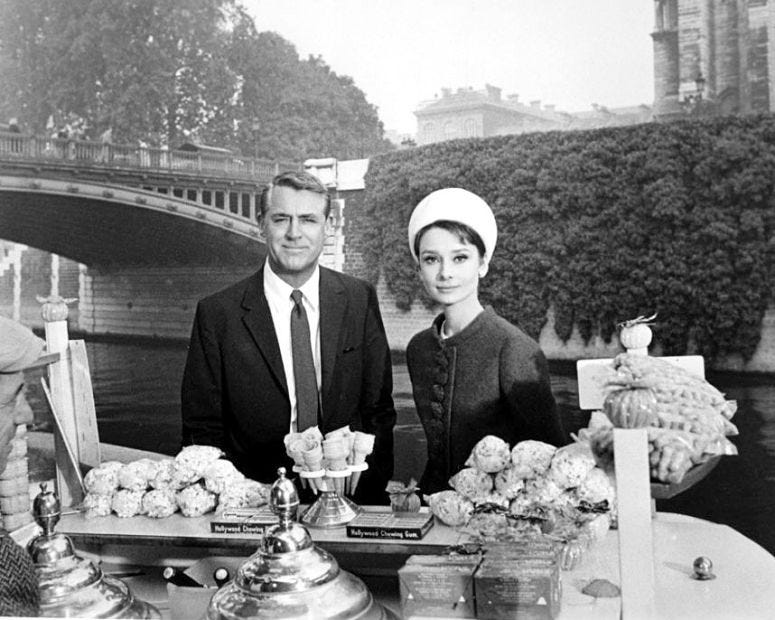Why You Need to Care About How You Look
It determines the reality around you
There’s a quote underrated in the realm of fashion and style landscape—but it always dictates the higher substance of this thing:
“Clothes are never a frivolity: they always mean something, and that something is to a large extent outside the control of our conscious minds.” – James Laver
When most people (especially men) hear or think about clothing, the first perception always leads to comfort—the function of the 21st century that has been worshipped as the new religion.
Originally, clothes were labeled as necessary factors for survival—a tool to prevent cold and larger diseases that came from it. Yet even tens of thousands of years ago, during the Paleolithic era, clothing had already surpassed its utilitarian function.
Based on empirical anthropological evidence—such as beads, shells, and dyed fibers sewn into hides—it is suggested that garments already carried symbolic weight. Things that served beyond mere pieces of leather or hide to cover the body. They signaled tribe, authority, and the status of individuals within the group.
That said, whenever men try to justify overlooking their appearance or avoiding concern about how they wear their clothes, the common objections are:
“Those things are for insecure, shallow people—hungry for validation.”
“Why bother to add things in life to make it more complicated?”
“I don’t have half an hour to determine what I’m about to wear since I have work and life to live.”
And guess what ‘exemplars’ they love to raise up?
“Look at Steve Jobs, Mark Zuckerberg, Elon Musk (and plenty of technocracy titans they can think of)—do they actually care how they look?”
Now, if you are reading this and still convinced in that way, allow me to put my finger on this topic:
Jobs’ turtleneck, Zuckerberg’s T-shirt, and Musk’s minimalist tailoring are no coincidence or acts of laziness but purely articulated speculation and full of intentional acts.
The clearest one that makes my statement eternal and absolute truth is the evolution of Steve Jobs.
Literally, there’s no chance you’ve never heard of his name—even though this man passed away a decade ago—his name still serves Apple and the very reason people still buy iPhones and Macs (of which I appear to be one of those).
Back in the late 1970s to 1980s, this was “Steve Jobs”—the legendary non-conformist of the tech industry…
Well…contradictory and opposite to your perception of him, isn’t it?
Whether his double-breasted navy blazer with grey tailored trousers or the fancy bowtie—they all screamed that this rigorous man named Jobs was still not living up to his myth.
However, across all the dynamics that he went through over the next decade—getting fired from his own company, continuing his journey at another, and finally returning to Apple with the “Think Different” slogan—the iconic Issey Miyake turtleneck became the symbol and doctrine for a whole Silicon Valley to this day.
The background of this is that Jobs needed a symbolic meaning, a physical manifestation of his manifesto of being a non-conformist—like his ideology, his Apple, his dream. That was when he needed to create a uniform, a perceptual distortion to make his image an icon.
That is why, since the 1997 Think Different campaign, he always appeared in that ensemble until the very last speech of his life. (The same concept applies to Zuckerberg and Musk.)
But gentlemen, the effect clothes have on the public perception of these iconic tech moguls is just the tip of the iceberg—as James Laver said, clothes carry meaning to a large extent outside our conscious minds.
And in this weekly essay of Renaissance Flâneur, I will dissect and lay out all of those large extensions of Why Clothes—why the garments you choose to put on your body matter to your life more than you think.
Human Nature & How We ‘Understand’ the World
We, humans, are creatures wired for story.
Everything you understand, everything you make sense of, comes from…
Morning Identity Check: The second you wake up, your brain writes today’s script: Who am I? What role do I play? Without that story, you’re lost. (And being lost causes such overwhelm that your mind, disgusted by it, will do whatever it takes to reclaim clarity.)
Daily Recap: When you talk with your colleague, your partner, your friend—you don’t just share facts; you tell tales. “You won’t believe what happened…” is universal. Gossip, venting, boasting—it’s all story packaging.
Nighttime Highlight Reel: Before sleep, your mind edits the day into a narrative—heroes, villains, victories, regrets. Most memorable are the experiences that embarrassed you, the moments that still make you linger. (Even dreams obey storytelling.)
Now I want to take this universal nature of humans—and combine it with another ugly truth of ours: lazy interpretation.
Whenever you see a gentleman or a lady with polished appearance, graceful gesture—your brain automatically perceives them as something.
Depending on individual experience, many will perceive them as capable, high-status, and trustworthy. For some with less-than-desirable interactions with such people, they will grow cautious, skeptical, and see them as fake or ingenuine.
The reason for this, again, is rooted in our lagged biological evolution. Since thinking deeply is expensive work, our brain—an organ that runs on glucose like a car runs on fuel—tries to save its energy. Every time you analyze, question, or imagine, you’re burning energy. And nature—being the ruthless efficiency machine that it is—wired us to conserve energy whenever possible.
So instead of dissecting reality with patience, we lean on quick judgments.
We see a face and instantly decide if it’s friend or foe.
We hear a tone and immediately know if it’s threat or comfort.-
We grab meaning from the surface of things—looks, sounds, vibes—without digging into the depth.
Why?
Because for most of human history, speed mattered more than accuracy.
Imagine your ancestor in the jungle, hearing a rustle in the grass. If he sits down and thinks carefully, “Hmm, is that wind, or is that a predator?”—he might become dinner. If he reacts instantly and runs, he survives—even if it was just wind.
The further harsh reality is that this nature is the main tool for generating first impressions whenever you meet new people. And as the halo effect dictates—a cognitive bias where a positive or negative impression in one area influences the perception of unrelated traits or characteristics in other areas—your initial look can shape everything.
The cost of not caring about impression—the way others perceive you through fleeting interpretation—is the chance to build a relationship. And without relationships, you cannot connect, create, or contribute to anyone.
Now here comes the interesting part—when you realize that your brain automatically understands the world through story, and that it also aims for the least energy-depleting way to understand things around you…
The statement here is this:
“Story is the ultimate mental shortcut—and our laziness for deep thinking makes us grab the nearest story (often based on appearances or sounds) instead of questioning if it’s real.”
While the brain doesn’t like raw data, it is addicted to pre-packaged meaning (AKA—the story). Stories provide order, heroes, villains, causes, effects. In essence, a story saves you from the pain of thinking deeply. (You can call it the brain’s favorite drug—which, ironically, is another story to make you understand this concept easier.)
When you see a man in a suit, you automatically think he’s professional, reliable, or capable (or maybe a sleazy salesman, if that’s your past experience).
When you hear a posh RP accent spoken by a woman, you automatically think she came from the British upper class (or at least contains the same qualities you envision).
The thing is—clothes, as I teased earlier, are another prime entity that contain stories of their own. And those who leverage them to the fullest gain the ability to shape perception and craft the ideal or desirable image they want (even if their inner qualities haven’t caught up yet).
Every Garment Contains a Narrative in Itself
Clothes are empty shells until story fills them.
A garment itself is neutral—it’s just fabric stitched together. But humans can’t leave it at that. We project meaning onto it. That meaning comes from context:
Who wore it first.
Where it was worn.
What cultural values it aligned with.
Each generation writes a new “chapter” of the garment’s story, and the lazy brain then accepts it as truth.
Let’s take a look at the suit.
Historically, the idea of a jacket and a pair of trousers—made from the same fabric, worn together—was a form of casualness, a garment to wear in the countryside at best.
Back in the 19th century, a man could not walk in the city without an overcoat—which meant the inner coat (jacket) and trousers were not enough. However, with the evolution of casual progression, the jacket and trousers—originally only worn indoors—became the staple garment during the early 20th century, and the ideology of the suit was born: not as casual wear reserved for the country estate, but as a symbol of standard, professional formality.
Which means, if you were to ask people born before the 1900s, their narrative, their perception of the suit, would be totally different from those born after the 2000s.
On one side, they saw it as casual wear; on the other, it’s the standard of formality.
Gentlemen, what I want to convey is this: behind every garment hides a narrative—constructed by humans.
Look at the T-shirt, for example.
From an undershirt that couldn’t be worn without a “shirt,” it evolved into an icon of rebellious cool during the mid-century, and later, into the acceptable standard as the only top.
Or jeans: from workwear reserved for blue-collar labor, they turned into a symbol of rock spirit, of effortless cool, and later the everyday trousers of the 21st century.
The thing is—you may not notice this, but look at your current attire right now…from top to bottom, everything you’re wearing both reflects how you perceive yourself and tells the world to believe so.
If it’s Athleisure Style (hoodie, sweatpants, fancy sneakers) → “I live in comfort, I’m casual, I belong to the culture of youth and tech. I’m not bound by old rules.”
If it’s Minimalist Fashion (neutral colors, oversized shirt, wide-leg trousers, bulky loafers) → “I’m refined, intentional, and I understand aesthetics at a higher level. I reject excess; I choose simplicity.”
If it’s Sartorial Tradition (tailored jacket, pleated trousers, leather shoes) → “I respect tradition, I invest in craft, and I carry myself with discipline. I’m a man of seriousness and detail.”
Each of them signals a narrative of its own.
The hidden art here—a secret that many iconic individuals use to leverage clothes to their favor, constructing perception as they desire—is to take back awareness consciously.
Because most of the time, modern men seem to be convinced by society either about what they should wear or why they shouldn’t care about what they’re wearing. When you take control of your own identity—knowing who you are and who you want to become—you can begin to shape that into reality using clothes.
Again, this comes down to the brain and story: it associates each garment with meaning. The detail here is this—you can cultivate meaning for each garment.
As I said: “Clothes are empty shells until story fills them.”
When you take control of the narrative back from the norm, you begin to freely tell a new story for each garment. For the suit—formerly just a symbol of formality—when you learn about Giorgio Armani during the 1980s deconstructing the suit and tailoring into an effortless, cool garment you can wear every day, the meaning changes. Or for leather footwear: once perceived as a boring painful pieces that reserved for ceremonies, you learn about the variety—from loafers to boots—each with origins and history of their own, and you start to see leather footwear in a new perspective.
When you begin to cultivate taste and intellectual detail about clothes, you also begin to use them for crafting your persona—and this is where the potency lies.
Perception Is the Invisible ‘Currency’ That Makes a Man Inevitable
“A reality distortion field…in his presence, reality is malleable. He can convince anyone of practically anything. It wears off when he’s not around, but it makes it hard to have realistic schedules.” – Bud Tribble on Steve Jobs
No matter how much I am displeased with the idea of modern technocracy—making everything casual, fast-paced, and fleeting—if there is one man I can firmly respect, and who acts as empirical evidence of how an individual who optimizes perception can bend the reality of his own and the world around him, it is Jobs.
His ability lies not only in product design (and far from coding genius), but in the ability to tell stories, to express a distinct charisma, and to manipulate perception using his own style (as we’ve already covered earlier).
“Truths are illusions which we have forgotten are illusions.” - Friedrich Nietzsche
The man who can master this perception bending—the ability to distort reality—can bear almost any “how.” The factors lie in the things that humans perceive and interpret fastest, without the need to think: these three—Visual, Audible, and Kinetic.
Visual: The appearance—from clothes, to face, to body composition.
Audible: The voice—from word choices, speech style, speed, and accent.
Kinetic: The movement—from body language, reaction, to gesture.
Optimize all three, and you begin to bend reality around you without the need for further explanation.
Again, for Steve Jobs (as you can witness in post-2000s keynote speeches or Apple product launches):
Visual: He crafted a uniform—black turtleneck, jeans, sneakers—that made him both iconic and timeless. It signaled the idea of rebellious disruption for a new millennium. Combined with his lean frame and piercing eyes, it gave him a prophetic presence, and the minimalist stage design ensured he was always the sole focal point.
Audible: His speech was slow, deliberate, and punctuated by silences that pulled the audience in. He chose simple, emotional words—“magical,” “revolutionary”—and repeated them like mantras (or enchantments).
Kinetic: Every movement was intentional. Open hands built trust, sharp gestures cut with authority, and slow pacing suggested control of time itself. Product reveals were ritualized—a flick of his finger could feel like the unveiling of the future.
Or consider the all-time iconic gentleman role model—Cary Grant—another undeniable case of how a man can bend reality and craft the perception he wants the world to hold of him.
Visual: Perfectly tailored garments, immaculate grooming, and posture that radiated effortless elegance. His visual presence told the story of sophistication and control, masking the raw, struggling Archie Leach—the poor, lower-class British boy beneath.
Audible: His voice was unlike any other—a strange, hybrid accent born from Cockney roots polished into invented mid-Atlantic sophistication (at least during the early to mid-20th century). Smooth, resonant, and deliberate, it was the sound of class manufactured, not inherited. Combined with delivery dripping with wit and timing, every word blended charm and intelligence. People didn’t just hear him—they wanted to keep listening.
Kinetic: This is where his gold was revealed. Grant’s movements were a masterclass in controlled spontaneity. His walk was graceful yet masculine, his gestures fluid without being exaggerated. He used physical comedy and subtle shifts in posture to make himself magnetic—whether exuding confidence in a suit or stumbling artfully in a pratfall. His body language was a dance between poise and playfulness—he was in control precisely because he never seemed to be.
The result was the intentional elegance he aspired to obtain—and successfully convinced others of—every time he walked into a room (or onto the screen).
Now, gentlemen, the noble objection to this idea will likely be in the matter of authenticity. The virtuous belief that a man or a woman must stay true to themselves and not let illusion or fakeness enter within—otherwise, they will be a liar or pretentious.
If you’ve read until this part and still hold this idea, allow me to mention this quote again: “Not if ‘yourself’ is limited, wounded, and half-formed.”
“Man first of all exists, encounters himself, surges up in the world — and defines himself afterward.” - Jean-Paul Sartre
When you buy into the school of thought where sculpting yourself to the very best is the virtue in life—then what’s wrong with shaping yourself and creating the perception you aspire to be? As long as that creation, that perception, is well thought, backed with purpose, and full of intention—then it will only be a multiplication of yourself to make everything you do more impactful.
Because, gentlemen—here are things that will take effect immediately when you’re in control of your own narrative and shaping perception to the world:
Narrative Control: As we’ve discussed in human nature, whoever controls the story controls reality. Narratives shape belief, belief drives action, and action creates outcomes. When you set the frame, you dictate how others experience the world around you.
Leverage Over Self: By crafting perception externally, you trick your own brain into evolving internally—a lifelong leverage, the ability to step beyond your origins, backgrounds, or any limitations and rewrite your own identity.
Authority Without Proof: You can’t deny that authority accelerates everything. It gets you obedience, trust, and influence before you’ve even earned it. In most contexts, the law of lazy interpretation does the work, and people follow perceived authority over actual competence—which means perception often outruns reality in practical effect.
Magnetism and Opportunity: Humans gravitate toward those who feel larger than life. Charisma is social gravity. People want to be near it, invest in it, work for it, follow it. This opens doors that raw talent alone never will. (It’s how Jobs drew investors, engineers, and fans; how Grant drew audiences, directors, and elite circles—even long after they passed away.)
Immunity Against Reality’s Friction: Bending reality buys you tolerance. Deadlines slip, flaws exist, yet people overlook them because perception is stronger than facts. (That’s why Jobs was forgiven or overlooked by the masses for impossible demands and behaving like a maniacal egotist.) When perception dominates, people excuse what would normally condemn.
In short: Control the narrative → Reinvent yourself → Claim authority → Attract opportunity → Withstand failure.
The thing is—there is no precise archetype or universal perceptive persona that applies to everyone. In the end, it’s your background, individuality, uniqueness, and personal spirit that construct the perception and bend the reality of the world you live in.
However, if there’s a single virtuous entity that has stood the test of time and will certainly enhance life experience in every aspect—that would be Elegance.
Elegance = the Pinnacle of Perceptive Thought
Elegance = Truth in Form.
It’s when appearance, sound, and movement all align with an essence that feels inevitable. Nothing extra, nothing false, nothing forced. It’s not about luxury (far from it)—it’s about refinement, stripping away the unnecessary until only the essential remains.
And there are reasons why humans, by default, are drawn to this philosophy:
Efficiency = Survival: Elegance signals mastery of complexity with minimal effort. The brain reads this as competence and fitness.
Symmetry & Order: Humans are wired to seek patterns; balanced form and proportion trigger pleasure and trust.
Predictability with Surprise: Elegance offers clarity with just enough novelty to engage without overwhelming.
Social Signaling: Grace in movement, speech, or style demonstrates control and higher status, attracting allies and mates.
Illusion of Truth: Simplicity and harmony feel true; people instinctively trust the elegant over the messy.
Elegance appeals to human nature because it represents mastery over chaos—a trait evolution has trained us to follow (and secretly worship).
The final heart of the matter here is How to Cultivate True Elegance—not just wearing classic menswear, a leather strap watch, and polished manners, speech, and gestures (though those are certainly elements of it).
When you look into the definition of truth in form—there are two dimensions: physical and mental.
In last week’s essay, I described the circulation of achieving happiness and its association with elegance already. In short, it’s about the alignment of inner qualities and external action.
The key is to be precisely aware of your inner qualities:
Who you are
What you stand for
Why you breathe and exist in this world
Answer them with clarity—only then will you achieve elegance; through aligning external action by making everything you do—from dressing, walking, eating, working, or living life as a whole—resonate with it.
When you create an ideal perception you want to project to the world—with truth of your own, the one that truly carries meaning—and when you do whatever it takes to achieve that form in a truthful way—then elegance will incorporate into your persona.
The world will know it, bend around it—and so will your mind, which will intersect your old self with this new one: a self crafted with intention, full of elegance, and serving as the narrative that allows you to live life at your own will.
(I call it “Narrative Capital”—which we will discuss further next week.)
For now, gentlemen, I wish you a fulfilling day ahead, and thank you for your time and attention.
Au revoir.











